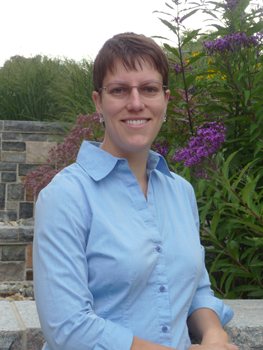Events: Details
| S | M | T | W | T | F | S |
|---|---|---|---|---|---|---|
| 1 | 2 | 3 | 4 | 5 | 6 | 7 |
| 8 | 9 | 10 | 11 | 12 | 13 | 14 |
| 15 | 16 | 17 | 18 | 19 | 20 | 21 |
| 22 | 23 | 24 | 25 | 26 | 27 | 28 |
| 29 | 30 |
Sarah Perry (UMass Amherst) at HWI: Microfluidics at Room Temperature Crystallography
| Category: | Seminar |
|---|---|
| Description: |
Sarah L. Perry received BS degrees in Chemical Engineering and Chemistry from the University of Arizona, as well as a MS in Chemical Engineering working on gas phase methods for chemically passivating silicon surfaces for semiconductor manufacturing. She received her PhD from the University of Illinois at Urbana-Champaign working on microfluidic platforms for the crystallization and study of membrane protein crystallization with Prof. Paul J.A. Kenis. She began working as a postdoc for Prof. Matthew Tirrell in the Bioengineering Department at the University of California at Berkeley and moved with the lab to the Institute for Molecular Engineering at the University of Chicago. Her initial research in the Tirrell Group focused on the use of self-assembling DNA-lipid films for use in transfection. She then expanded her research to investigate the self-assembly, structure, and physics of biomimetic polyelectrolyte systems known as complex coacervates for use as artificial organelles or nanoreactors.
Dr. Perry will be in Buffalo on April 19th to give a talk based on her research. Details below. Date & Time: April 19th, 2018 at 3PM EST Location: Hauptman Woodward Institute, 700 Ellicott Street, Buffalo, NY 14203 Room: Flickinger Lecture Hall 1F
Microfluidics for Room Temperature CrystallographySarah L. PerryDepartment of Chemical Engineering, University of Massachusetts Amherst, Amherst, MA 01003, USA (perrys@engin.umass.edu)Coupling microfluidic technology with advanced protein crystallography techniques for in situ analysis is an area of research where significant advances can be made. Microfluidic platforms have the benefit of not only enabling experiments at small volumes, but also of creating an environment free of inertial or convective effects while providing exquisite control over local conditions and gradients. A significant problem in microfluidic-based crystallography is the background scattering resulting from the interaction of X-rays with the device materials, which may reduce the signal-to-noise ratio obtained from small or weakly diffracting crystals. These challenges can be overcome by decreasing the overall thickness of the microfluidic device. In particular, we utilize graphene as an ultra-thin X-ray compatible window material. Furthermore, the mechanical strength, gas impermeability, and conductivity of graphene have the potential to enable a tremendous range of structural biology experiments including room temperature serial crystallography, the analysis of oxygen-sensitive proteins, high-throughput ligand screening, and electric-field stimulated crystallography experiments.
We acknowledge support from the NSF Science and Technology Center on Biology with X-ray Lasers (NSF-1231306).
|
| When: |
Thursday, April 19 2018, 3:00 PM - 4:30 PM (ET) (UTC -05:00) Eastern Time (US & Canada), Bogota, Lima |




